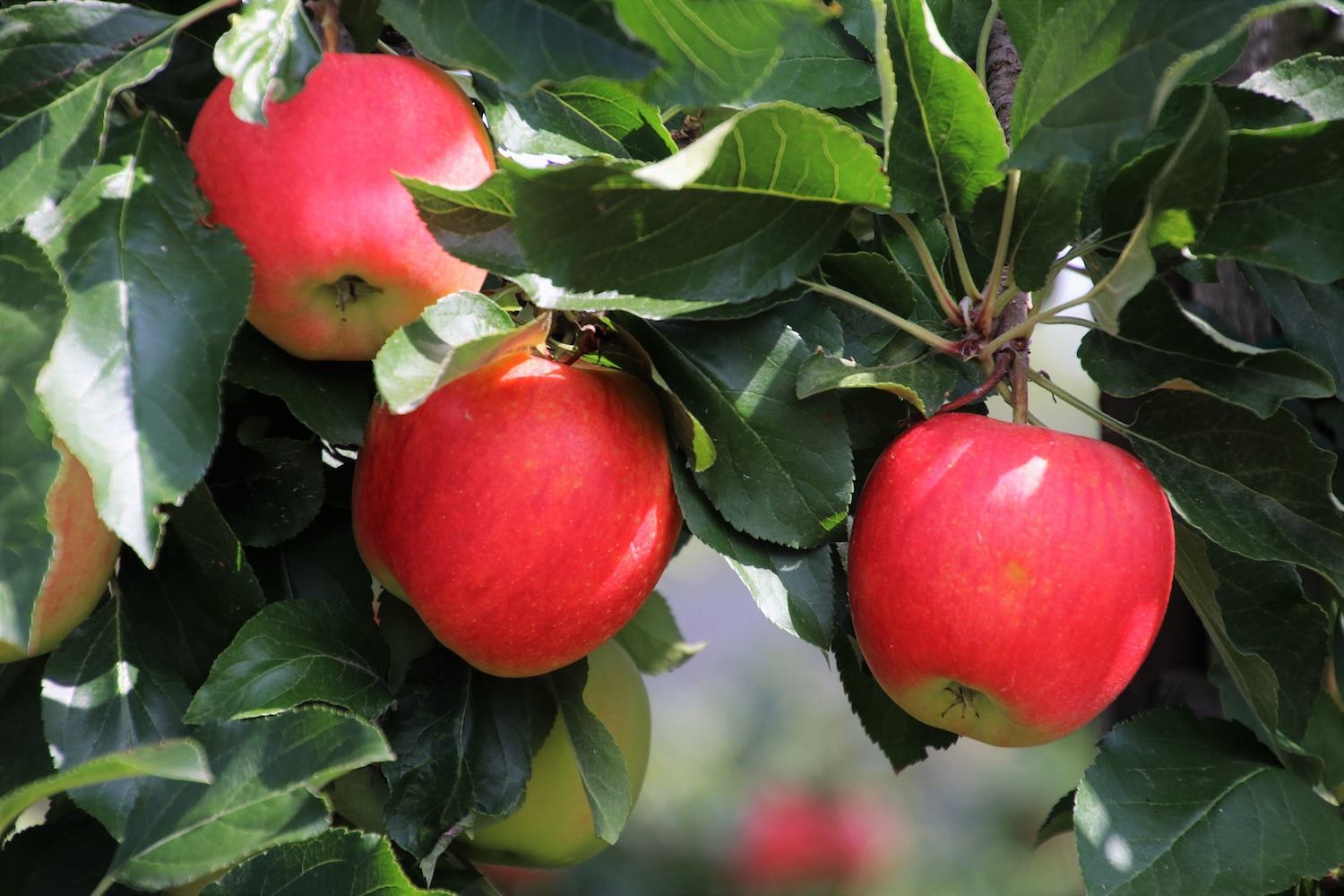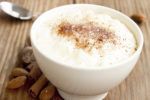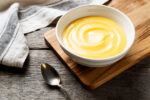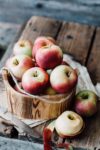
A Variety of Ways to Cook Apples
Apples were introduced to North America by colonists in the 17th century, (the 1600s). The only apples native to North America are crab apples which were once called “common apples.”
Apple trees are large if they are grown from seed, but most apple trees are grafted onto rootstocks, which control the size of the resulting tree. Source
INFORMATION BELOW FROM 1800s COOKBOOKS
NOTE: There were no oven thermometers in the 1800s. Cooks learned how to heat their ovens and how long to cook a dish through experience.
APPLE FRITTERS
Take three good juicy cooking apples, three eggs, six ounces fine wheatmeal, one-half pint milk, and sugar to taste. Pare and core the apples and cut them into rounds a quarter inch thick. Make a batter with the milk, meal, and the eggs well beaten, adding sugar to taste. Have a frying-pan ready on the fire with boiling oil or butter. Dip the apple slices into the batter and fry the fritters until golden brown. Drain them on blotting paper, and keep them hot in the oven until all are done.
APPLE CROQUETTES
Peel, core, and quarter four good-sized cooking apples. Cut in thin slices and put them in a granite ware saucepan over the fire with a tablespoon of butter, a heaping tablespoon of sugar, the grated rind of half a lemon and a saltspoon* of cinnamon. Cover tightly and cook until tender, taking care that it does not burn. When done, add an even tablespoon of potato flour, mixed with a very little water, then stir in one beaten egg and remove from the fire. Turn into a deep plate to get cold. Form in cylinders, dip in egg and dried bread crumbs, and fry in boiling fat. Sift powdered sugar over them and serve hot, with or without cream.
*saltspoon – a miniature spoon used with an open salt cellar for individual use before table salt was free-flowing.
BAKED APPLE DUMPLINGS
Sift a pint of flour with a teaspoon of baking powder and one-half teaspoon of salt. Put one-fourth pint of butter into it and chop it fine with a knife. Mix it well but do not use the hands. Then add milk enough to moisten it; about one-fourth pint. Dust a pastry board with flour, take the dough from the bowl, and roll lightly into a sheet about one-eighth inch thick. Cut into squares large enough to hold an apple.
Pare and core medium sized cooking apples, fill with sugar and a little cinnamon, put in the middle of the square and draw the corners up over the apples, moistening them with a little white of egg or water to make them stick. Brush over the dumplings with beaten egg and bake in a good oven. The time will depend upon the apples—about half an hour. Serve with cream.
APPLE PUDDING
Take some tart cooking apples, pare, core, and slice them. Lay them in cold water for a few minutes to prevent them from turning dark. Put the apples in a porcelain lined or granite saucepan and add water as deep as the apples, but not to cover them. Cover the saucepan tightly and let the apples cook until tender, then mash well. Add sugar, grated lemon peel, and cinnamon to taste. Put the pan back on the stove and when it comes to a boil, add a tablespoon of potato flour mixed with a little cold water. Stir well and let it cook for a few minutes. Turn it into a mold and serve the next day with cream.
APPLES WITH BROWN SUGAR
Pare and halve your apples, either pippins, red-streaks, or wine-saps. Make a syrup of light-brown sugar, allowing half a pound to a pound of the fruit. After boiling and clarifying* the syrup, pour it over the fruit, and set it by for two days. Then cook them, and seasoned with green ginger root. They are excellent, will not require much cooking, and should be of a light-brown color.
*clarify – strain or skim
APPLE FOOL
Pare, core, and cut up two pounds of apples, stone* one-half pound of dates, and tie six cloves in muslin. Gently stew the fruit and the cloves with a teacup* of water until quite tender. When sufficiently cooked, remove the cloves, and rub the fruit through a sieve. Gradually mix three-fourths pints of milk, which should be boiling, then one-fourth pint of cream. Serve cold with sponge-cake fingers.
*stone – remove the pits
*teacup – same as a jill or gill; four ounces in the U.S. and five ounces in the U.K.
COMMON FAMILY APPLE-SAUCE
Let your stock of apples be picked over several times in the course of the winter, and all the defective ones taken out. Let the good parts of these be pared, and if not used for pies, be made into apple-sauce. Boil them in a preserving kettle. After they are tender, add a pint bowl of brown sugar, and boil it gently fifteen minutes longer.
Towards spring, when apples become tasteless, a teaspoon of tartaric acid,* dissolved in a little water, should be added to a gallon of apple pieces.
*tartaric acid – a vegetable acid which exists in the grape
APPLE CUSTARD
Pare, core, and quarter half a dozen fine, large cooking apples. Put them in a double boiler with the grated rind of half a large lemon. Cook until tender and press through a sieve; there must be three-quarters of a pint of the purée. Add an ounce and a half of granulated sugar and set it away to get cold. Then beat three eggs very light and stir gradually into a pint of rich milk alternately with the apple purée. Add a little cinnamon, pour it into a pudding dish, and bake about twenty minutes. Serve cold with a little cinnamon and sugar sifted over it.
==========================================
Johnny Apple Peeler by VICTORIO VKP1010,
Cast Iron, Strong Suction Base, 5 Year Warranty, Stainless Steel Blades, 3-Way Operation
======================================
When I was a child, we had a large apple tree in our yard. All the kids in the neighborhood ate apples that fell on the ground, eating around the worm holes. Even today, I rarely cook apples – I usually eat them raw.
What about you? How do you like to eat apples? Please leave a comment below.
=======================================





2 thoughts on “A Variety of Ways to Cook Apples”
I grew up in western New York State where apples are plentiful. In fact, the apple is the official state fruit in NY. As a small child in the Finger Lakes region of NY, my best friend’s father owned a local cider mill and my friend & I had free reign at the mill. To this day I can remember exactly how the apples were turned into apple cider. So I enjoyed this ‘apple’ article very much as you’ve brought back some wonderful memories.
I have had fresh cider before and love it, but have never seen it made. I did get to watch a historical enactment of making apple butter in a huge iron pot over a fire. The person making the apple butter used a long wooden handled paddle to keep it stirred so it wouldn’t stick or burn.